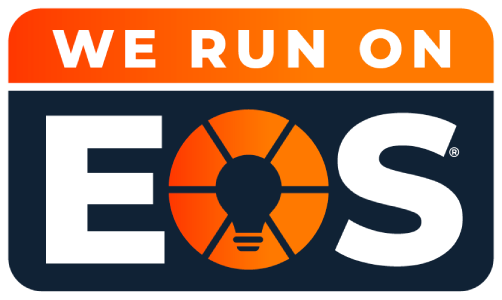Talent management is a critical pillar of organizational success. But what if there was a way to not just manage talent, but to truly unleash its potential? Enter the Entrepreneurial Operating System (EOS), a comprehensive framework designed to streamline operations, foster accountability, and drive results. This article explores how integrating EOS tools can revolutionize talent management strategies, offering a roadmap for organizations seeking to optimize their human capital and embark on a journey of transformation.
Understanding EOS and Its Relevance to Talent Management
The Entrepreneurial Operating System (EOS) is more than just a management philosophy; it’s a systematic approach to achieving organizational excellence. At its core, EOS emphasizes clarity, alignment, and accountability—qualities essential for effective talent management. By aligning talent strategies with EOS principles, organizations can unlock untapped potential within their workforce and drive sustainable growth.
People Analyzer™ is a powerful tool that enables organizations to delve deep into individuals’ alignment with company values and culture. It goes beyond just assessing skills and qualifications, focusing on the intangible aspects contributing to a successful fit within the organization. By evaluating candidates or existing employees against predefined criteria, organizations can ensure that every role is filled with individuals who possess the necessary skills and resonate with the company’s ethos and culture.
The Accountability Chart serves as a blueprint for organizational structure, defining clear roles and responsibilities for every individual within the organization. This clarity minimizes confusion, prevents duplication of efforts, and maximizes productivity by ensuring that everyone understands their role in achieving the organization’s objectives.
The GWC™ (Gets it, Wants it, Capacity to do it) framework helps organizations evaluate individuals’ suitability for specific roles based on three critical factors:
- Gets it: Refers to the individual’s understanding of the role and its requirements.
- Wants it: Indicates the individual’s passion and desire to excel in the role.
- Capacity to do it: Assesses the individual’s capability and capacity to effectively execute tasks associated with the role. By thoroughly assessing candidates or employees against these criteria, organizations can ensure that individuals are capable and genuinely passionate about their roles, leading to higher engagement and performance.
The Quarterly Conversation™provides a structured platform for managers and employees to engage in open and constructive dialogue about performance, goals, and development. Unlike traditional performance reviews, which often occur annually and may focus solely on past performance, the Quarterly Conversation™ encourages ongoing feedback and goal-setting. This continuous feedback loop promotes a culture of transparency, accountability, and growth, allowing employees to address challenges, capitalize on strengths, and chart a path toward constant improvement.
Practical Strategies for Implementing EOS Tools in Talent Management
Integrating EOS tools into talent management practices is not just a theoretical concept. It’s a practical approach that can be seamlessly aligned with existing HR processes such as recruitment, onboarding, and performance management. By incorporating EOS principles into these processes, organizations can ensure consistency and alignment throughout the employee lifecycle, from recruitment to retention.
Training and Development
Leveraging EOS tools for training and development involves identifying skill gaps within the organization and tailoring training programs to address these gaps effectively. By aligning training initiatives with organizational objectives and individual development plans, organizations can foster a culture of continuous learning and development, empowering employees to reach their full potential and contribute to organizational success.
Feedback and Adaptation
Soliciting employee feedback on the effectiveness of EOS tools is essential for continuous improvement. Organizations should actively seek employee input through surveys, focus groups, or one-on-one discussions to identify areas of improvement and adapt strategies accordingly. By incorporating employee feedback into refining EOS tools and processes, organizations can ensure their ongoing relevance and effectiveness in driving talent management initiatives.

Understanding EOS and Its Application in Talent Management
The Entrepreneurial Operating System (EOS) is a comprehensive framework designed to empower organizations to achieve their fullest potential. At its core, EOS comprises three key components:
- Vision: Establishing a clear and compelling vision is the foundational element of EOS. This involves defining where the organization is headed and articulating it in a way that inspires and motivates everyone involved. The vision is a guiding beacon by aligning everyone towards a common goal, ensuring that every action and decision contributes to the overarching objectives.
- Traction: While vision sets the direction, traction is about execution. EOS emphasizes the importance of disciplined execution to turn the vision into reality. This involves establishing processes, setting priorities, and holding individuals and teams accountable for delivering results. Traction ensures that progress occurs consistently and effectively, driving the organization toward its goals with purpose and efficiency.
- Healthy: The third component of EOS focuses on cultivating a cohesive and functional leadership team. A healthy organization is one where trust, transparency, and open communication are fostered among team members. By building strong relationships and promoting a positive work environment, EOS ensures that the organization operates as a unified entity, with every member working towards common objectives.
How EOS Principles Align with Talent Management
The principles of EOS align seamlessly with talent management practices, offering a structured approach to maximizing human capital’s potential within organizations. In talent management, having a clear vision involves defining the organization’s talent needs, identifying key competencies, and envisioning the desired future state of the workforce. Organizations can align recruitment, development, and retention strategies with the overall business strategy by articulating talent-related goals and objectives.
Just as traction ensures disciplined execution in achieving business goals, it also applies to talent management by driving accountability and results. By setting clear performance expectations, establishing metrics for success, and providing regular feedback, organizations can ensure that employees are aligned with organizational objectives and consistently deliver high performance.
A healthy organizational culture is essential for attracting, retaining, and developing top talent. By fostering trust, transparency, and open communication, organizations can create an environment where employees feel valued, engaged, and motivated to contribute their best work. A cohesive and functional leadership team sets the tone for a healthy culture, serving as role models for collaboration, accountability, and continuous improvement.
Benefits of Applying EOS in Talent Management
Applying EOS principles in talent management offers several benefits for organizations, each one a compelling reason to consider these tools:
- Clarity: EOS clarifies talent needs, roles, and expectations, ensuring that everyone understands their responsibilities and how they contribute to the organization’s success.
- Alignment: By aligning talent management strategies with the overall business strategy, EOS ensures that talent initiatives support the achievement of organizational goals, driving alignment and synergy across the organization.
- Accountability: EOS fosters a culture of accountability where individuals and teams take ownership of their roles and responsibilities, driving performance and results in talent management initiatives.
- Engagement: A healthy organizational culture under EOS promotes employee engagement, leading to higher levels of motivation, satisfaction, and retention.
- Results: Ultimately, applying EOS in talent management leads to improved organizational performance, increased productivity, and sustainable growth by effectively leveraging human capital.
Practical Strategies for Implementing EOS Tools in Talent Management
Incorporating EOS principles into talent management practices empowers organizations to optimize their workforce, drive employee engagement, and achieve their strategic objectives with precision and purpose. It’s essential for maximizing their effectiveness in talent management. Here’s how organizations can align EOS tools with key HR processes:
- Hiring: Integrate EOS principles into the recruitment process by aligning candidate assessments with the organization’s core values and culture. Utilize the People Analyzer™ to ensure candidates are qualified for the role and fit culturally within the organization.
- Onboarding: During onboarding, use the Accountability Chart to clarify new employees’ roles and responsibilities within their respective teams. This fosters clarity from the outset and ensures that new hires understand how they contribute to the organization’s goals.
- Performance Management: Incorporate EOS principles into performance management by setting clear employee expectations and goals. Use the GWC™ framework to assess employees’ understanding, passion, and capacity to fulfill their roles effectively. This ensures that performance evaluations are objective and aligned with organizational objectives.

Training and Development
Identifying training needs and tracking development progress are integral parts of talent management. Here’s how organizations can leverage EOS tools in training and development initiatives:
Identifying Training Needs: Use EOS tools such as the People Analyzer™ and GWC™ framework to assess employees’ skills, competencies, and areas for improvement. Based on the gaps identified during these assessments, identify training needs, ensuring that training programs are tailored to address specific organizational needs.
Tracking Development Progress: Implement EOS tools to track employees’ development progress. Use the Quarterly Conversation™ to conduct regular check-ins with employees, discussing their development goals, progress, and any challenges they may be facing. This enables managers to provide support and guidance as needed, ensuring that employees continue to grow and develop in their roles.
Feedback and Adaptation
Collecting feedback on the effectiveness of EOS tools and adapting strategies based on this feedback is crucial for optimizing talent management practices. Here’s how organizations can implement feedback and adaptation mechanisms:
Establish mechanisms for gathering feedback from employees on the effectiveness of EOS tools in talent management. This can be done through surveys, focus groups, or one-on-one discussions, allowing employees to share their experiences and suggestions for improvement.
Analyze the feedback collected and identify areas for improvement or adjustment in talent management strategies. Be proactive in making necessary changes to optimize the effectiveness of EOS tools in achieving organizational objectives. By adapting strategies based on feedback, organizations can ensure that talent management practices remain relevant and aligned with evolving business needs.

Common Challenges When Integrating EOS Tools into Talent Management
- Resistance to Change: Employees may resist new tools and processes due to comfort with current routines. Introducing EOS tools can be seen as disruptive, causing concerns about workload or job roles. Resistance may also arise from employees not being involved in the decision-making process, leading to disconnection from changes in the organization.
- Lack of Understanding: Clear communication is necessary for employees to understand the purpose and benefits of EOS tools. Without it, there may be reluctance to use the tools if employees don’t see their relevance to their tasks or organizational goals, potentially underestimating their impact on their work and the business.
- Inadequate Training: Adequate training is essential for the effective use of new tools, but organizations might not provide enough support for EOS tool adoption. This can result in frustration and misuse, as employees struggle without guidance to understand and utilize the EOS tools, undermining their effectiveness in enhancing business processes and efficiency.
Practical solutions and tips for overcoming these challenges
- Effective Change Management: Communicate the rationale behind integrating EOS tools transparently. Highlight the benefits and how they align with the organization’s goals, addressing any concerns or misconceptions.
- Education and Training: Provide comprehensive training sessions on EOS tools, emphasizing their relevance and practical application in talent management. Offer ongoing support and resources to reinforce learning and encourage adoption.
- Lead by Example: Leadership endorsement of EOS tools is crucial. Leaders should actively demonstrate the use of EOS tools in their work and promote their benefits to inspire employee confidence and adoption.
Conclusion
Integrating EOS tools into talent management practices offers organizations a structured and systematic approach to optimizing their human capital’s potential. Organizations can foster clarity, accountability, and employee engagement by aligning talent strategies with EOS principles, driving organizational success.
As organizations navigate the complexities of talent management, adopting a systematic approach using EOS tools can pave the way for improved efficiency, productivity, and employee satisfaction. Embracing these principles empowers organizations to unlock the full potential of their workforce and achieve sustainable growth in today’s competitive landscape.
We encourage readers to explore EOS tools for their own organizational needs and leverage them to enhance their talent management practices. By embracing EOS, organizations can create a culture of excellence and drive success through effective talent management.
Looking for the perfect talent for your growing organization? Let us match you with the right executive with the right skills to help guide you in continued growth.






Reader Interactions